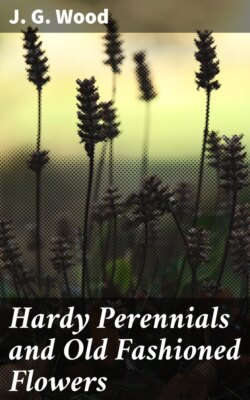Читать книгу Hardy Perennials and Old Fashioned Flowers - J. G. Wood - Страница 39
На сайте Литреса книга снята с продажи.
Aster Alpinus.
ОглавлениеTable of Contents
Alpine Starwort, or Blue Daisy; Nat. Ord. Compositæ.
An exceedingly beautiful and very much admired alpine plant, which does not die down like most of the Starworts, but has woody stems; it is seldom seen more than a foot high, and its large bright purple flowers seem disproportionate. This is one of the plants which should have a place in every garden, and more especially in rock gardens. There cannot well be a more neat and telling subject; the form and size of its flowers are not often seen on such dwarf plants, and it also has the merit of being a "tidy" subject when not in bloom. The illustration (Fig. 18) will give a fair idea of its main features. Its purple flowers, which are fully 2in. across, have for many days an even and well-expanded ray, when the florets curl or reflex; the disk is large, and numerously set with lemon-yellow florets; the flowers are well lifted up on stout round stems, covered with short stiff hairs, and furnished with five or six small leaves; the main foliage is of compact growth, lance-shaped, entire, spathulate and covered with short hairs.
Fig 18 Aster Alpinus. (One-third natural size.)
Considering that this plant has been in English gardens for 220 years, and that its merits must be seen by anyone at a glance, it is hard to say why it is not better known; even in choice and large collections it always proves attractive when in flower. The blooms in a cut state are very durable; they not only hold together, but also keep a good colour. Under cultivation it is in no way particular; it will endure anything but being deprived of light; from its dwarf, stout, and shrubby character, it would form a useful and a handsome edging to the larger walks; and by growing it so extensively an enviable supply of flowers for cutting would be at hand.
A stock of young plants may soon be got up by division of strong roots after the flowering season; such pieces as have roots may be planted at once in their permanent quarters; the rootless parts should be dibbled into light sandy loam and shaded with branches for a week or two.
Flowering period, June and July.
A. a. albus is a white-flowered variety, blooming about the same time. There does not appear to be that vigour about it which characterises the type; this, however, is not the only shortcoming; when compared with the rich purple flower, the white one, with its large yellow disk, appears, to say the least, a questionable improvement.
